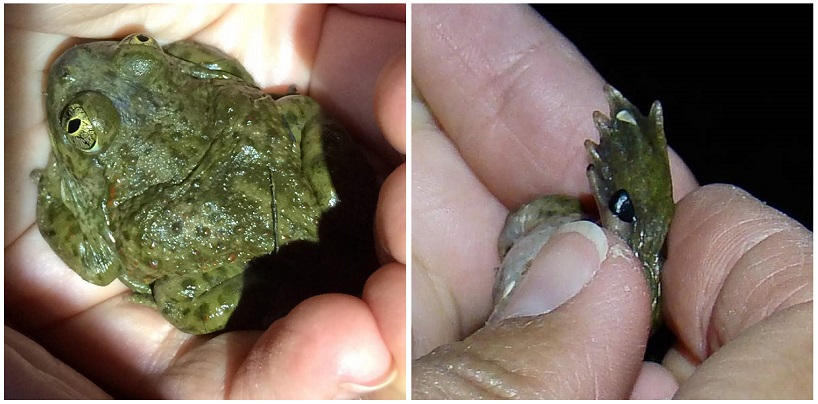Taxon of the Week: Spadefoot Toads
 Left: Western spadefoot (Spea hammondii) adult; Right: The “spade” on its back foot.
Left: Western spadefoot (Spea hammondii) adult; Right: The “spade” on its back foot.
Today we explore the spadefoot an amorphously shaped creature with bulging eyes and catlike vertical pupils. California is home to three species of spadefoot toads: Couch's spadefoot (Scaphiopus couchii), western spadefoot (Spea hammondii), and Great Basin spadefoot (Spea intermontana). Though commonly referred to as toads, spadefoots are not considered “true toads” since they lack parotoid glands behind their eyes. Spadefoots are named after the harden black "spade” on their back feet used for digging burrows in the soil. They typically spend most of their lives underground and emerge to breed in ponds.
The CNDDB tracks two of the species, Couch’s and western, and both are a California species of special concern. Western spadefoots are found in the Central Valley and along the south coast. They frequently breed in temporary ponds, such as vernal pools, that are formed by winter rains. Couch’s spadefoot ranges in the desert throughout the southwestern United States and occur in the southeastern corner of California. They are triggered by summer monsoon rain events to emerge and breed in rain-filled pools. This species is adapted to extremely dry conditions, and tadpoles are known to metamorphose within 8 days in a race against evaporation!
These squishy and soft friends protect themselves by secreting toxins that make them unpalatable to predators. There have been accounts that adult western spadefoot secretions smell like peanut butter, but don’t spread them on toast! Spadefoot secretions are known to cause eye irritation and runny noses in humans, so keep that in mind if you come across one. If it is a western spadefoot or Couch's spadefoot, be sure to share your findings with us through our Online Field Survey Form.